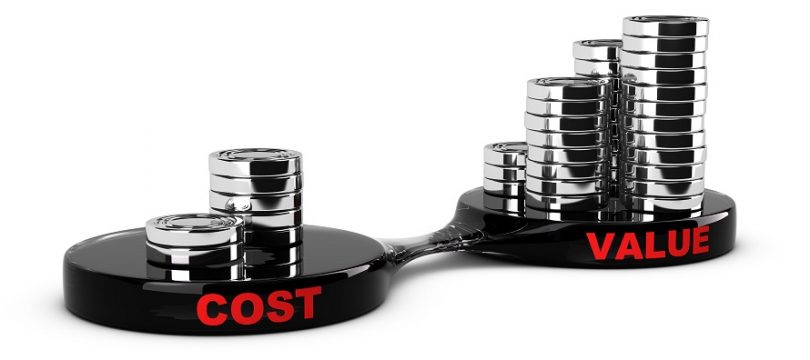
by Guest Blogger – Michelle Thompson
“Price is what you pay. Value is what you get.” (Warren Buffett)
So it seems pretty obvious, right? Most people are willing to pay for something they perceive to be of value. The price they are willing to pay will depend on their perceived value of the product. For example a footy fan might pay $2000 for a ticket to an AFL grand final because it is of high value to them, whereas a non footy fan wouldn’t even consider paying that much for the ticket. In our personal lives, we make these evaluations every day – from where we choose to have lunch, to buying a new pair of shoes, to buying a new house or car… So why is it that when organisations come to procuring high cost and valuable services that the ‘value’ part of the equation seems to get overruled in preference to cost?
Cheapest = best choice: Uh, no. I went to buy a new TV over the weekend. There are obviously a lot of options available and a lot of different brands. But while 2 TVs might be the same size; differences in type, brand, energy rating, consumer reviews and features all have an impact on the overall cost of the TV. In determining the value of the TV most people in this sort of situation take these factors into account and come to a decision based on the factors that are most important to us. However often in situations where organisations are procuring high cost services, they still select solely on price without giving consideration to the value of the product they are getting for that price. The problem is, when you’re not comparing apples with apples, the value you are getting does not always equate to the price you pay.
Often when organisations go to tender for unique and specialist services (For example, highly technical services for large infrastructure projects) this concept of value seems to get sidelined and the cheapest quote selected. Why? Because they believe they are comparing apples with apples, when really they’re comparing apples with asteroids. Often, as cost and scale increase, so does complexity and companies tendering for these services do so under their own sets of assumptions and commercial practices in the absence of clear instruction and sufficient project information from the client. If clients are not crystal clear in their RFT documents about the specifics of what they want from a technical and commercial perspective, it will mean tenderers will fill in the blanks and price risks accordingly, using varied approaches. This will make it exceedingly difficult, if not impossible for the client to conduct an apples for apples comparison of tender bids to assess the best value for money option.
What does this mean to organisations procuring these services? Often the ‘cheapest’ bid can end up resulting in:
- More variations
- Poor product quality (resulting in higher ongoing costs) and higher defects
- Poor relationships and a lack of trust as the client and contractor argue about what is actually included and what was excluded in the original specification
- Contractually driven relationships, where all issues are referred back to contractual agreements and not solved constructively, ultimately adding to the total project cost
In the end, the price the organisation pays can actually end up being more than if they had selected based on value as opposed to upfront cost.
How can organisations avoid this? There are several things organisations can do to obtain value from the services they procure. These can include:
- Selecting the most suitable procurement models for the services they are procuring and explaining the rationale why.
- Being clear on what they want to achieve, the project objectives, what problems they are trying to solve, and what they want the contractor to do.
- Being crystal clear on who is responsible for what aspects of the project, and where the risks lie. Having a clear risk allocation process is a good way to do this
- Making sure that tender responses have the same basis for comparison – i.e. be specific about what companies are quoting for – from number of hours per week to whether super is included in hourly rates to overtime. This will provide clear assumptions that the client can evaluate against on an apples for apples basis rather than every service provider using their own approach.
- Setting up projects to be value driven – not measured in terms of just cost but also how well the project has addressed other key result areas such as safety, stakeholder management, quality and functionality and other key areas.
- Managing projects through relationships, not contracts – by building trust, aligning expectations and ensuring there is a regular opportunity to review progress.
Ultimately, the value an organisation gets from a procured service will far outweigh the initial cost of that service if time is invested up front to address the points above. The trick for organisations is to be aware of how to identify, drive and measure that value. Value truly is in the eyes of the beholder, but just ensure your eyes are wide open!



